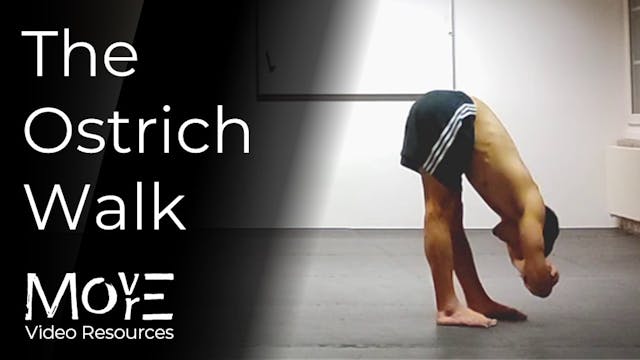'Single-leg (SL) reach' progressive variations
Lower-body elasticity
•
3m 36s
THE WHAT:
Time to inject some "noise" into the fundamental unilaterally-hinging 'Reach' form, with an eye toward furthering structural, kinaesthetic & proprioceptive awareness, responsiveness, and general adaptability in the ongoing cultivation of movement 'dexterity'. On the physical layer, mobility & "elastic" qualities now come to the forefront (namely in the 'SL sagittal swing’ and ‘Lean & swing’') as well as knee-stability & intrinsic foot-strength.
In adding transverse rotation and ultimately progressing to ‘circles’, balance is notably challenged as we explore local hip-ranges and their effect in changing the position of the upper-body in space, when the leg is fixed to the floor (fundamentally ‘closed kinetic-chain’ and resulting in a high neuro-muscular demand). Further to capacities developed in the process, this experience has a DIRECT carry-over to ALL single-leg balancing work.
During this process of practice there is not only a noticeable prehabilitative stimulus to the knees, contributing to integrity-development, but also a high requirement for FRUSTRATION MANAGEMENT. There will be places which feel as if there is no "patterning information" whatsoever, and working in end-ranges means that there is little room for correction. Despite minimal repetitions, it will be a consistent FIGHT not to fall, and yet fall you will - again, and again...
Resource contents:
0:05 - Single-leg sagittal swing
0:46 - Single-leg sagittal lean & swing
1:33 - SL reach & transverse rotation
2:16 - SL reach 'circles'
______________________________
For programming, guidance, & support for your physical practice:
FREE fundamental prehabilitation program: https://www.movemoremp.com
Online Support (1 to 1 coaching): https://movemoremp.com/onlinesupport
Elements (standardised programs): https://www.movemoremp.com/elements
[email protected]
Up Next in Lower-body elasticity
-
Travelling 'squat-bounce'
THE WHAT:
A simple & accessible squat context which expresses & develops the elasticity of the lower-body articulations and their intrinsic connection to the upper-body. As it travels through space it is fundamentally a LOCOMOTION-conditioning context, although, as a pattern in and of itself, it ... -
Ankle-dorsiflexion development
THE WHAT:
Whist consistent practice of these two simple forms contributes toward developing range & elasticity in ankle-dorsiflexion, their form & position (i.e. 'hinged' in the hip), also affects the hamstrings of the 'working' leg. For this reason, they are equally valuable in developing FRONT-... -
The 'Ostrich Walk'
THE WHAT & HOW:
A dynamic, ballistic locomotion pattern which develops the elasticity of the posterior-chain, further to range in front-folding & active compression (when executed with this intent, i.e. active PULLING of the top of the head toward the floor).Practitioners should be mindful - wh...



